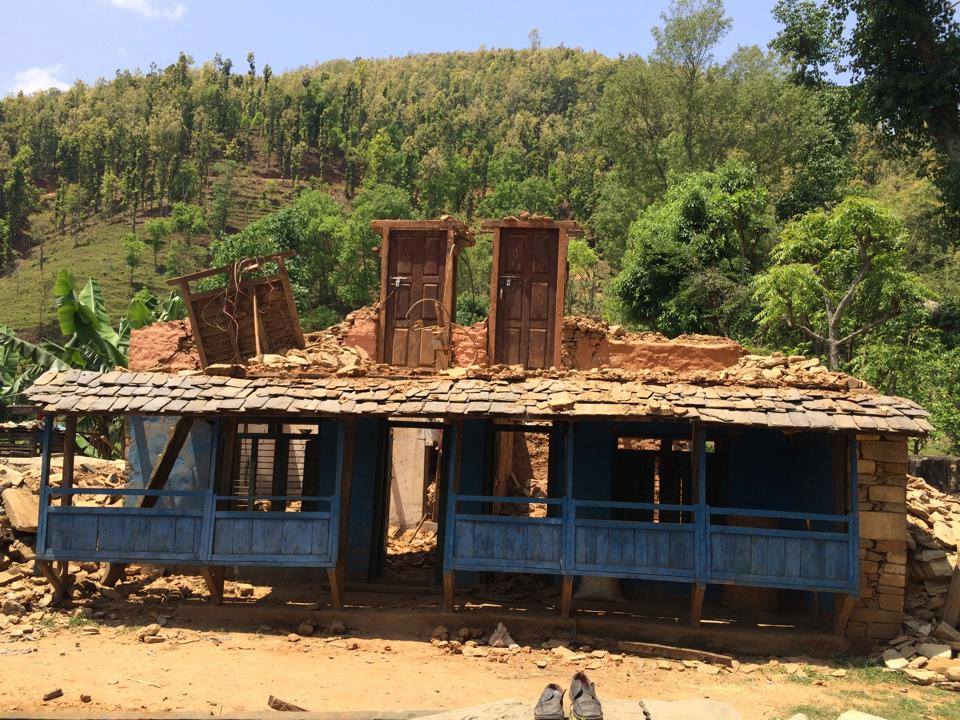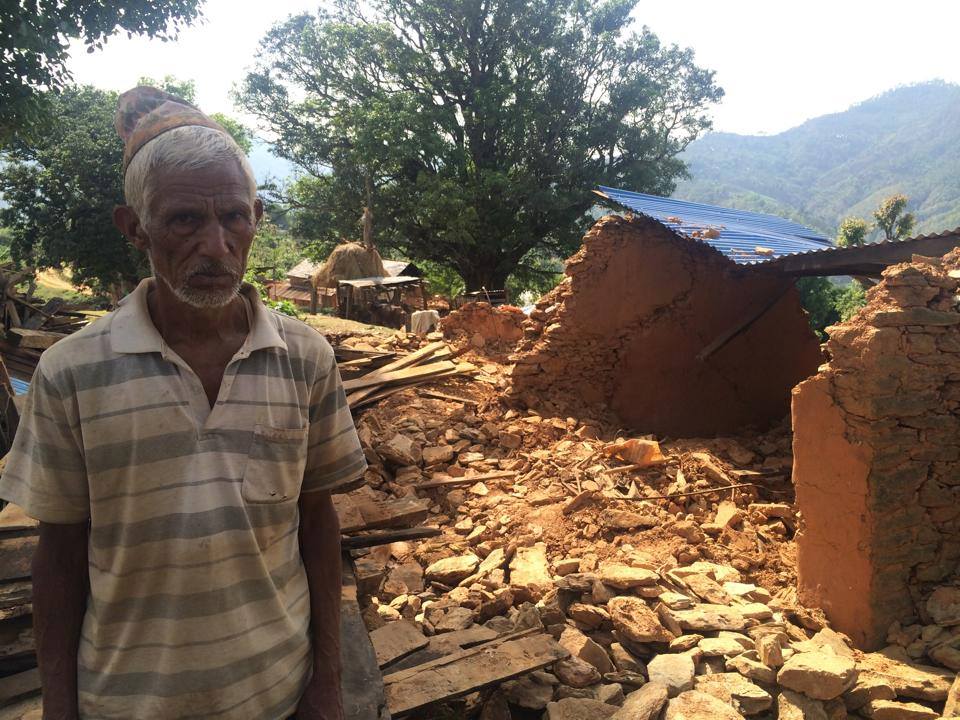A Statement from the Institute for Asian Research, University of British Columbia:
The Institute for Asian Research at UBC sends its deepest condolences to the people of Nepal in the aftermath of the 7.8 earthquake that struck the country on April 25th, 2015. UBC has many connections with Nepal, and many faculty, students, and alumni have been working hard to support relief efforts through coordination, translation, fundraising, and information sharing. For those who would like to donate to organizations engaged in relief and eventually reconstruction in Nepal, the Canadian government is matching donations made to the Red Cross until May 25th; see also the list put together by the Association of Nepal and Himalayan Studies here).
Memo #335
By Anil Bhattarai – anilbhattarai [at] gmail.com
 With its aftermath of almost 7,500 dead, 14,500 injured (the numbers are still rising), and more than 400,000 buildings partially or completely destroyed, the 7.8 earthquake that hit Nepal at noon on April 25, 2015 is the largest humanitarian disaster in Nepal’s recent history. While relief efforts will likely continue for months across one of the world’s most rugged mountain terrains, it is time to start planning for the largest reconstruction effort in the Nepali state’s 246-year history. By encouraging a participatory and transparent approach that limits corruption, this effort can actually improve the quality of life for Nepali citizens in substantial and sustainable ways.
With its aftermath of almost 7,500 dead, 14,500 injured (the numbers are still rising), and more than 400,000 buildings partially or completely destroyed, the 7.8 earthquake that hit Nepal at noon on April 25, 2015 is the largest humanitarian disaster in Nepal’s recent history. While relief efforts will likely continue for months across one of the world’s most rugged mountain terrains, it is time to start planning for the largest reconstruction effort in the Nepali state’s 246-year history. By encouraging a participatory and transparent approach that limits corruption, this effort can actually improve the quality of life for Nepali citizens in substantial and sustainable ways.
Individual homes constitute more than 95 percent of the damaged structures. In some districts, over 99 percent of all homes are now uninhabitable. Most of the buildings that collapsed were not only structurally weak, but overcrowded and poorly-ventilated. Families of six or seven would huddle together in low-ceilinged, single-room or double-room houses. New permanent homes need to provide thermal protection against cold, be adequately large and airy, and earthquake-proof.
In Nepal, the home is also a sacred place, and should meet the cultural as well as the material needs of the household. For this reason, householders should be the key stakeholders in their redesigning and rebuilding, with basic engineering support provided by those with specialized expertise. As experience from Haiti demonstrates, ragtag do-gooders and mass, pre-fab home delivery must be avoided. With proper design and sustainable construction techniques, a lot of materials can be salvaged from damaged homes and the local commons, such as community forests, pastures, and streams.
In many cases, households will be able to utilize their own and their neighbour’s labour but, because they have been through such trauma, they will also need wage support. Cash will be needed for wages and for the procurement of some materials from the market. This is where the support of the state is crucial, and cash transfers need to be made directly to local households in affected areas.
The Nepali government has already established a Rs. 200 billion (US$2 billion) fund. State agencies must not be directly involved in the procurement of materials, as this is perhaps the biggest source of corruption in Nepal. Increasing transparency and taking an integrated, participatory approach that allows households a significant role in decision-making, will allow for the largest redistribution of resources to the country’s poor in Nepal’s history while avoiding corruption.
About the Author:
Anil Bhattarai is a Ph.D. student in the Department of Geography and the Program in Planning at the University of Toronto.

An earthquake-devastated building in the village of Dhawa in rural Gorkha district, Nepal (Credit: Learning Planet, https://www.facebook.com/LearningPlanet).

In the village of Dhawa an image captures the material destruction and human suffering of the recent earthquake (Credit: Learning Planet, https://www.facebook.com/LearningPlanet).
Links
- Nixon Boumba, “How not to rebuild Nepal,” Washington Post (April 2015).
- Chris Carrol, “How impoverished Nepal can rebuild for the next earthquake,” National Geographic (April 2015).
- Diana Manilla Arroyo, “Blurred lines: accountability and responsibility in post-earthquake Haiti,” Medicine, Conflict and Survival 30, No. 2 (2014): 110–132.
- Yan Chang, “An integrated approach: managing resources for post-disaster reconstruction,” Disasters 35, no. 4 (2011): 739–765.
- Colin Davidson, et al., “Truths and myths about community participation in post-disaster housing projects,” Habitat International 31, no. 1 (2007): 100–115.
Related Memos:
See our other memos on Nepal.
[…] and poets are working out the vision, which we will share with you very soon. In the meantime, here’s an astute assessment on rebuilding right with safe sustainable designs and local […]